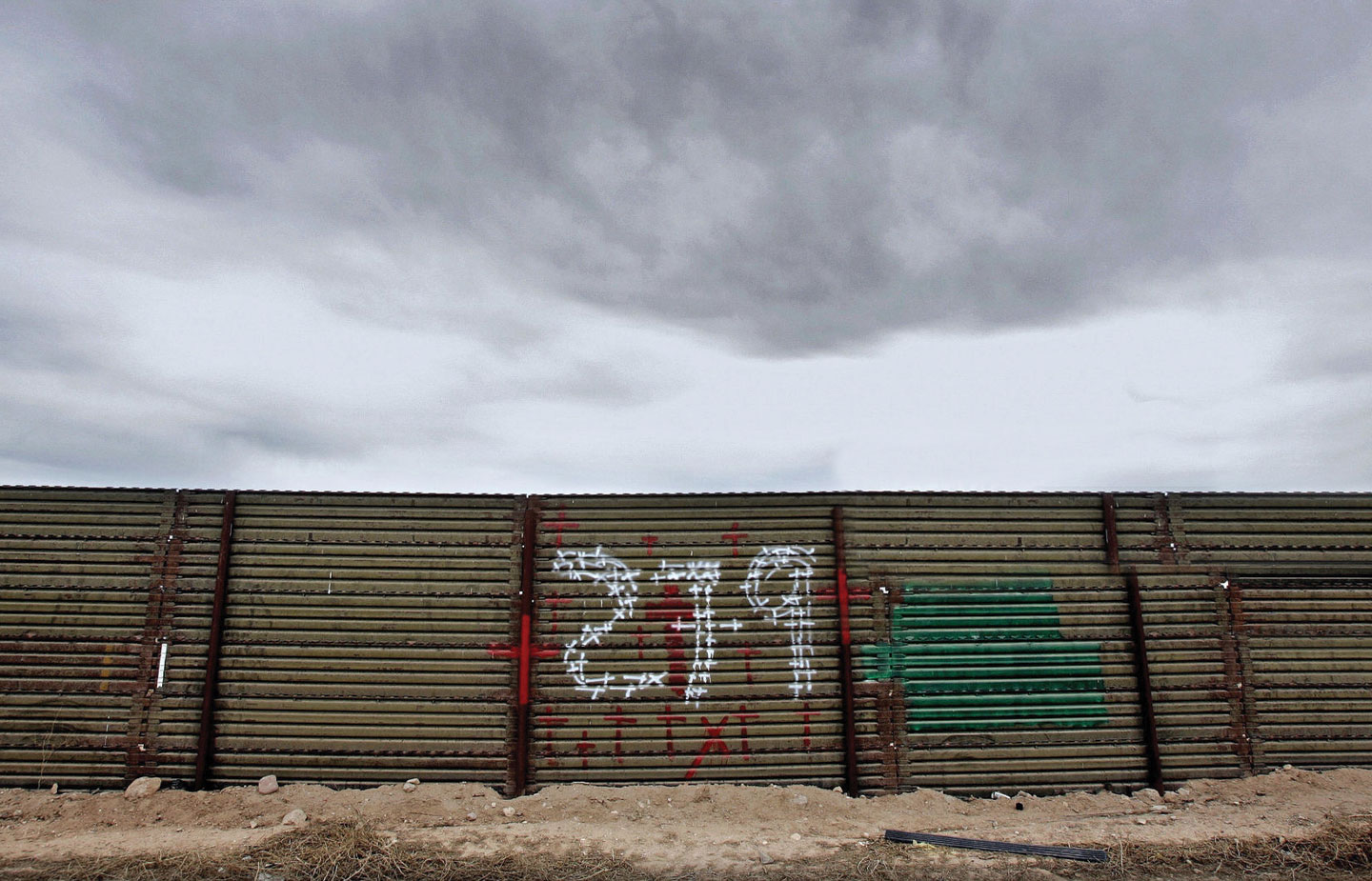On The Border
Travel writer Jackie Bryant ’08 examines the tensions that exist along the U.S.-Mexico border, as she crisscrosses between Douglas, Arizona, and Agua Prieta, Mexico.
What are you doing in this lane?” a Customs and Border Patrol agent at the crossing into Douglas, Arizona, yelled at us from outside the car. This border crossing was not like the others.
“He can’t walk,” Keoki answered from behind the wheel, gesturing toward our friend Tom in the front seat next to him. “So we decided to bring him across in the car with us.” Our driver was Keoki Skinner, an American former journalist and decades-long resident of Agua Prieta, the Mexican town just across the border. Our companion was Tom Miller, a sexagenarian writer who has lived in Tucson for much of his adult life and has written extensively about both the borderlands and the Southwest.
“This lane is for people in the SENTRI program only. You and the woman in the back seat, who isn’t registered to this car, know that.” SENTRI, or Secure Electronic Network for Travelers Rapid Inspection, is a program that enables expedited crossing from Mexico into the United States for those who must do so frequently. I knew he was wrong—I didn’t have to be registered to the car—but I also knew he could do what he wanted. The rules were different here. “I’m going to have to review your status, and we’ll decide what to do with you.”
The three of us fell silent as the agent walked away. Keoki explained that a recent tactic of Customs and Border Patrol was to cycle in “green” agents from the airports—people who had no land border experience—to keep aggression and anger high. Once someone sticks around, he tends to soften and even become sympathetic to those he sees every day, so the agency tries to keep it fresh.
It felt nerve-wracking to be on the wrong side of border patrol, even as a white American woman. I wondered what the crossing experience must be like for people who are darker—and therefore more suspicious—in the eyes of the authorities. A loss of expedited border crossing would be an inconvenience for me, but my life would go on.
“It seems I was mistaken,” the agent shouted as he approached Keoki’s car 15 minutes later. “Honestly, I didn’t really know the rules.” We let out a sigh of relief but quickly felt angry. The head agent at a border crossing didn’t know the rules?
My experience with the border is that of an outsider: I live near it, in San Diego, and I cross it frequently, but I can choose to ignore it. It’s a privilege millions don’t have, with families, jobs, schools, friends, doctors and lives scattered across this very real yet frustratingly arbitrary line.
To outsiders further afield, the border is an abstract concept that bubbles up now and then after lying dormant—although these days, it’s on the tips of tongues across the country. The same themes arise each time: cartels, NAFTA, immigration without documentation, migrant workers, the role and reach of border patrol. Less discussed are the lives left in the border’s wake.
In southeastern Arizona, tensions run high, as they do near most militarized border crossings. These tensions aren’t new. In his book, On the Border: Portraits of America’s Southwestern Frontier, Tom details what’s now referred to as “The Hanigan Incident.” A group of ranchers in the border town of Douglas brutally tortured and almost killed three undocumented Mexican migrants who crossed their land while trying to get to the fields to look for work. This was in 1976.
I had set out for Douglas from Tucson. Tom is unable to drive, so I took the wheel. We stopped in Bisbee, an old copper mining town that scales up and down a canyon. We descended from the mountains into a flat, scrub-dotted desert valley with mountains at the edge of the bluebird sky.
Eventually, Tom said, “See those mountains? That whole horizon is Mexico.” It was hard to believe. Where I live, you start to see signs for Mexico almost a full hour north of it. It’s significantly less populated here, but no less an international frontier. About 20 minutes later, we approached Douglas, where we passed through cattle ranches, still with no indication we were running up against another country. By this point, we could have spit across the border.
We approached a stoplight in the center of this small town, which had a sign finally acknowledging Mexico’s proximity. It instructs motorists to turn right if they want to cross into Mexico, just a few hundred yards away. Driving past the Gadsden Hotel, where playwright and novelist Thornton Wilder once took a self-imposed exile, we landed at the aptly named Border Mart. Our friend Keoki appeared after a few minutes.
We climbed into Keoki’s old mustard-colored Volvo and creaked across the border without being stopped by Mexican authorities. Agua Prieta is a town of about 80,000—much bigger than Douglas’ 17,000. The economies of both towns are marked by their locations on the fence: Agua Prieta’s lifeblood is dominated by solar energy, narcos, smugglers, those who work in Arizona with or without documentation, and the maquiladoras—foreign-owned factories; Douglas’ jobs are mainly in border-related law enforcement, ranching and farming. In between the two towns, a tall, perforated, rusted metal fence snakes through the desert.
